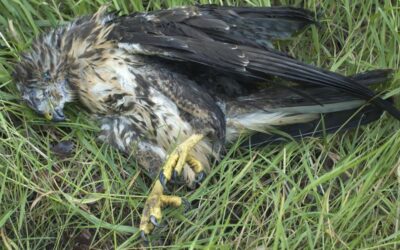Detectable anticoagulant rodenticide residues in 87% of barn owls are highlighted by a new report to the UK Rodenticide Stewardship Regime, co-ordinated by the Campaign for Responsible Rodenticide Use UK.

CRRU chairman Dr Alan Buckle says this is clearly unacceptable and demands consistent professionalism among all pest controllers, farmers and gamekeepers.
“Best practice by a responsible majority will not be enough,” he urges, “it’s a must for everyone, without exception or excuses.
“In 2020, there will be an official in-depth review of the regime’s implementation and impact on wildlife. For it to be judged effective, lasting reductions in rodenticide residues carried by non-target wildlife are expected.
“Without such evidence, we should anticipate further restrictions on how rodenticides can be used, and by whom. Clearly, this places responsibility squarely in users’ own hands.”
Dr Buckle says the 2019 Rodenticide Residues in Barn Owls report from the Centre for Ecology and Hydrology identifies neither an increasing nor decreasing trend in rodenticide residue incidence compared with benchmarks of 94% in 2015 and 78% the following year.
Over a seven-year baseline (2006-2012) defined by the stewardship regime, the annual average is 81%.
Among barn owls with residues, the report says just over three-quarters carry more than one rodenticide compound. Of residues detected, 86% were lower than 0.1 part per billion (ppb).
The report covers liver analysis of 100 dead barn owls obtained during 2018 from the Predatory Bird Monitoring Scheme. Cause of death was mainly traffic collision or starvation.
Any haemorrhaging found at post-mortem was associated with physical trauma.
No clear evidence was found that any had died from rodenticide poisoning.
Dr Buckle points out that finding no overall increase in residue incidence is notable for two reasons:
“It was feared by some that higher incidence could happen after new outdoor use was permitted in 2016 for the highest potency resistance-breaking compounds. Moreover, 2018 when the barn owls were collected was the first full year in which all aspects of stewardship were in operation.”
He also raises two notes of caution from the report.
Formal measures of stewardship’s impact for the HSE-led Government Oversight Group include detectable residues of flocoumafen and difethialone.
While the 2018 sample showed no difference from the 2006-2012 baseline in the prevalence of flocoumafen, a higher proportion of barn owls did have detectable residues of difethialone.
The second note of caution is that among samples with low level (<0.1ppb) brodifacoum residue, the 2018 median was higher than baseline.
Overall, Dr Buckle says the report demonstrates very clearly why continued vigilance and commitment to rodenticide stewardship is essential from everyone involved.
For further information: Dr Alan Buckle, CRRU UK chairman, alan@alanbuckleconsulting.com, www.thinkwildlife.org




0 Comments